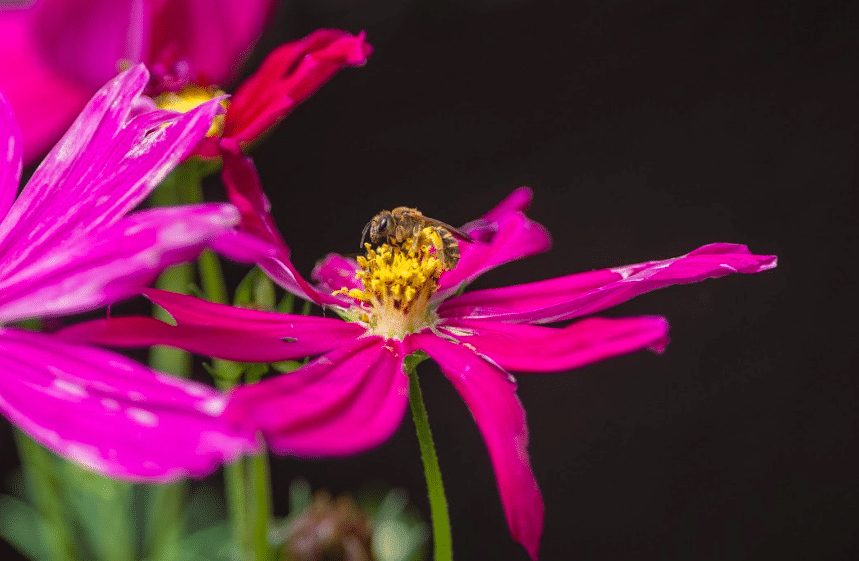Many animals can sense electric fields, such as sharks and rays, electric fish, and some species of dolphins. But this is the first time that this sense has been discovered in an insect! Bees and flowers have been studied intensely for decades and it turns out that they have been exchanging secret messages all this time.
Scientists have known about the electric side of pollination since the 1960s, although it has been rarely discussed. As bees fly through the air to pollinate flowers, they bump into charged particles, which can consist of dust in the air and even the smallest molecules. The friction of these microscopic collisions strips electrons from the bee’s surface, and they typically end up with a positive charge. Therefore, a bee visits a flower as it is attracted by the bright colours, the patterns on the petals and the aromatic smell of the nectar, but not only: there is more to pollination than sight and smell, since electricity in the air is also involved!
Flowers, on the other hand, tend to have a negative charge: the positive charge that accumulates around the flower induces a negative charge in its petals. When the positively charged bee arrives at the negatively charged flower, sparks don’t fly, as it usually happens when two opposite charges come into contact, but pollen does. As a matter of fact, many sensory biologists observed that pollen jumps from the flower to the bee, as the bee approaches, even before it has landed.
However, one of the most importat question has never been asked and much less answered: do bees know anything about this process? To answer this, some scientists teamed up to create an artificial flower charged with electric fields. They later observed that, when bees had the chance to choose between a charged flower (carrying a sugary liquid) and a non-charged flower (containing a bitter liquid), the insects soon learned to choose and visit the charged flower. If none of the flowers were charged, the bees lost their ability to detect the sugary liquid.
It has also been proven that bees are able to discriminate between fields of different shapes, which depend on the shape of a flower’s petals and how easily they conduct electricity. They can even use them to work out whether a flower has been recently visited by other bees, since electric fields change instantaneously whenever a bee lands.
But the real question is, how do bees register electric fields? Actually, no one knows, but some scientists think that the fields produce small forces that move some of the bee’s body parts, perhaps the hairs on its body. In the same way that a rubbed balloon makes you hair stand on end, a charged flower provides a bee with noticeable stimuli.
